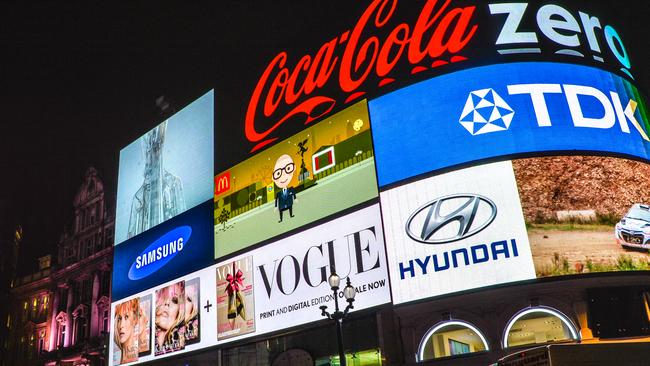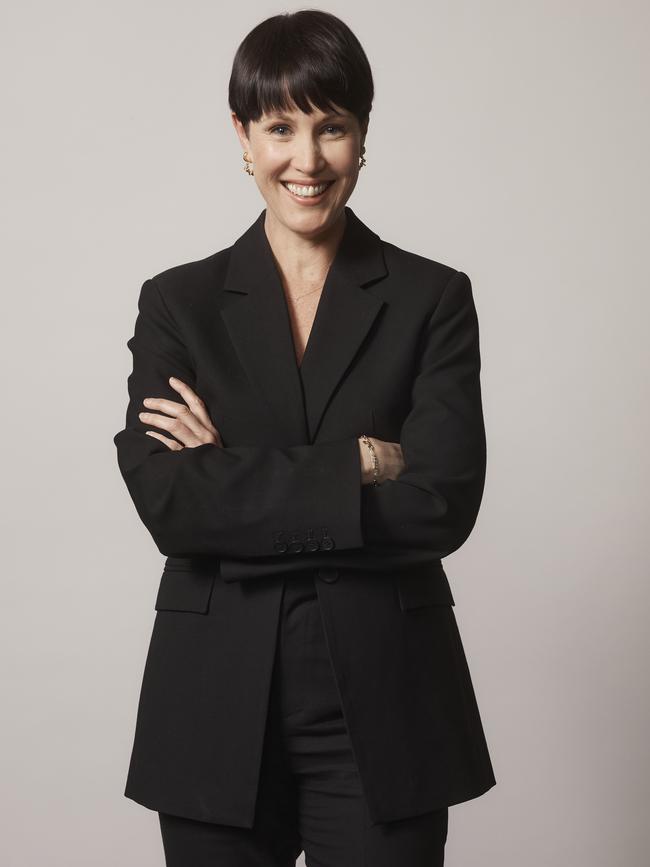How creativity can help companies grow in 2024
“Creativity doesn’t belong to one department. It is a mindset.” Seven marketing and creative leaders share the trends that executives need to know in 2024.

Finding new ways to drive growth amid challenging economic conditions has become the new normal, as the World Bank forecasts slow economic growth for the third year running.
Creativity, and its many and varied applications in business, could provide firms with more opportunities if executives know where to look, experts say.

Sir John Hegarty, co-founder and creative director at The Garage Soho and The Business of Creativity
Of course creativity is central to growth. No one denies that. Even McKinsey, that global powerhouse of business acumen, says it’s essential for growth. The problem we have is by and large business leaders don’t understand it, are wary of it and therefore fail to take advantage of it.
Ask these people to define creativity and you will get a jumbled list of definitions that confuse process and philosophy. They fail to understand the two types of creativity, pure and applied. And couldn’t articulate the difference between creativity and innovation. Ignorance has never been a strategy for success.
All of this results in a waste of resources, badly functioning teams and a failure to engage with a subject that delivers growth and competitive advantage.
The more you understand something the more value you will extricate from it.

Suzana Ristevski, chief marketing officer, NAB
I feel like creativity has always been important, but the explosion of generative artificial intelligence (AI) in 2023 will have/has already had a significant impact on the way we marketers approach content creation and customer engagement.
Generative AI has revolutionised the process of generating high-quality content, making it easier and faster than ever before. In just seconds, we can now create email copy, social media captions, and other forms of content. Moreover, Gen AI can leverage relevant information and data to create personalised content that caters to each individual customer’s preferences and needs. This level of personalisation greatly enhances customer experiences and improves engagement.
However, as the technology becomes more accessible to everyone, there is a risk that content will start to look and feel the same across all brands. To counteract this, we must ensure that we maintain a focus on creative excellence. AI-generated content should be guided by brand identity prompts, ensuring that it reflects the unique characteristics of our brand. Our brand campaigns should strive to be brilliant and stand out in the crowd.
In a world filled with generative AI, the opportunity lies in elevating the importance of humanity and creativity. By prioritising these aspects, we can (and should) delight customers in ways that fosters a deeper connection. NAB will continue to explore the benefits of generative AI, but we will also be very focussed on building brilliant creative campaigns that capture the hearts and minds of our customers.

Mandie van der Merwe, chief creative officer, Saatchi & Saatchi Australia
Tabitha Babbitt was a weaver who lived in a religious community. She noticed men having difficulty cutting wood with a pit saw. It required two people to use and only cut in one direction. For years, the community solved the problem by training more men. Babbitt came in, stuck a circular blade to a spinning wheel and voila… the circular saw.
Like Babbitt’s community, marketing teams are often guilty of solving problems that aren’t the actual problem. In 2021, BetterBriefs found that a third of global budgets were wasted on bad briefs – a $5bn-plus hole in Australia. In a year of slow growth, be incisive with identifying the real problem.
Another learning from Babbitt’s story is that problem-solving needs to be less siloed. Creativity doesn’t belong to one department. It is a mindset. Bring your agency into your business to help solve problems beyond the scope of pure communications. You’ll be surprised how often a weaver can invent a circular saw when given the chance.

Nico Neumann, assistant professor, Melbourne Business School
Data, automation and artificial intelligence (AI) will be the dominating themes of 2024. While most companies will praise the productivity gains of AI, there will be many workflow and process adjustments disrupting the media industry. Not everything will work out as planned.
In a generative AI world, where products and standards become increasingly the same bland average, C-suite executives will return to appreciate the value of human creativity and critical thinking. On the other hand, thanks to increasing cyber security risks and privacy regulations, chief marketing officers will need to learn that data can also be a liability and not only an asset. It will be important to find trustworthy publishers and providers of audience and content data.

Sheryl Marjoram, chief executive, DDB Group Sydney
Everyone is in the same boat. 2024 is a level playing field, not an excuse. Those who remember there are no business problems, only human problems will have an edge.
Commercial growth has slowed because humans are doing it tough. But they’re still human.
They will continue to be attracted to things that make them ‘feel good’. They will continue to make most of their decisions via intuition and instinct. Emotional advertising outperforms rational persuasion on almost every dimension. It is a growth driver in the long and the short term.
People will also continue to be attracted to things that other people like. Following the herd is emotionally easy and a fast, an efficient ‘good decision’. Far from being ineffective and indulgent, it’s good business for brands to be famous – as mental availability increases, market share magically follows.
Famous brands attract more light and infrequent users, and penetration is always the biggest driver of growth. So in a year of slow growth when nobody will have enough people and funds to do everything they want, creativity and fame will matter more than ever.

Victoria Curro, managing director R/GA Australia
Reading the public mood and responding with empathy is going to be crucial for brands. ABS data shows that Australia’s jobless rate held at 3.9 per cent, but employers shed more than 100,000 full-time jobs as the impact of higher interest rates dragged on the economy. One in three Aussies is struggling to put food on the table. That’s a reality few brands or businesses can afford to ignore.
The challenge lies not in adopting a gloomy tone, but in using creativity to express empathy. It’s a fragile moment, but it’s also a huge opportunity for brands to speak to consumers as people first. “Value” can often feel like an ugly word, but we can talk to people in a way that makes sure their compromises don’t feel like failures. Help them solve problems, or give them a win. Offer something clever or surprising, make them laugh or give them some sunshine.
Telling customers what to do in a cost of living crisis probably won’t land well either – we had enough of this in the pandemic. The ‘we’re all in this together’ became patronising and grim. If brands and businesses are not really self-aware and humble, they could be taken the wrong way and sound inauthentic as we face yet another year of economic uncertainty.

Rodica Titeica, director of marketing ANZ, Subway
There is no doubt that strong creative in advertising achieves better cut-through because it gets more attention from consumers. We recognise the importance of that and have steadily worked on repositioning our brand and elevating Subway’s creative execution over the past few years. The bold steps we’ve taken with our creative have had a positive impact at the top of the sales funnel – but it is only one attribute of our strategy for growth.
Subway competes in an environment where consumers are making choices about what they eat multiple times a day – every single day. It’s critical we have a deep understanding of the drivers behind those choices, so we invest heavily in consumer and industry research.
Subway is well established across Australia and New Zealand, so the impressive growth we’ve achieved in the past four years has been incremental. We’re incredibly proud of that because it shows that our growth hasn’t come by simply opening more restaurants – it’s come as a direct result of the initiatives we have delivered across the business, and importantly – it’s growth we believe is sustainable.
As a brand with freshness at its core, we’re continually seeking a fresher way of doing business. Doing that requires truly creative thinking – not exclusively within brand, marketing, and advertising – but across the entire business. Creative thinking requires brands to hold the mirror up, take a good hard (honest) look and identify opportunities that exist within the business today – to grow towards a more successful tomorrow.






